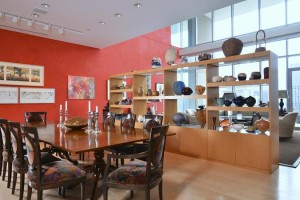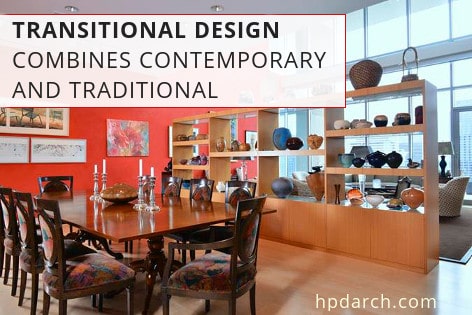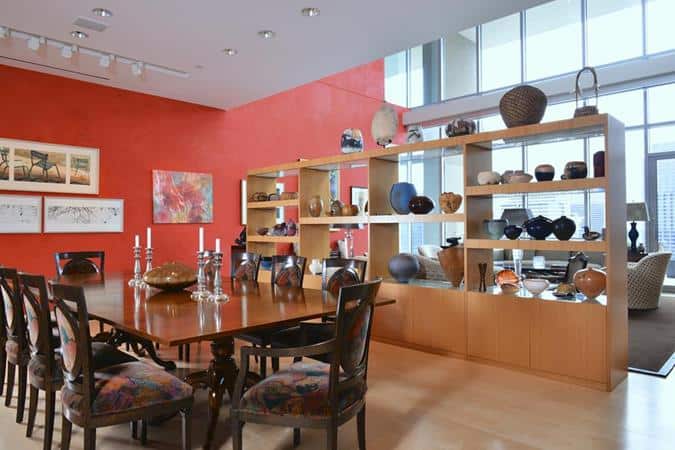Recently, we have been helping a couple plan the renovation of their home. His tastes are a mix of rustic, urban, masculine, relaxed, and refined. She prefers traditional, casual, and sophisticated. They have several antique pieces that are family heirlooms. Presented with the opportunity to redo their home, they would like to introduce some touches of contemporary while still keeping the familiar. They are proactive in looking for materials, finishes, and furniture but sometimes combining these elements has been confusing.
 Are you experiencing a similar design situation or see the potential for one?
Are you experiencing a similar design situation or see the potential for one?
What is Transitional Design?
The transitional design philosophy thoughtfully combines both traditional and contemporary elements to create a unique and coordinated look.
I describe it as balancing elements of both contemporary and traditional in the same space. This can be done in different ways:
1. Different objects which represent each style in the same room, such as your grandmother’s mid-century modern sofa with a contemporary Lucite coffee table.
2. Both elements in one object or grouping of objects, such as dining room chairs, which have traditional shape but use contemporary fabric.
3. Traditional materials used in contemporary ways (or vice versa), such as using more traditional subway tiles and installing them vertically rather than horizontally.
The essence of transitional is that it is a pleasing combination of opposites presented in a slightly unexpected way which creates a thoughtful, personalized style for the home. It is not something done haphazardly, like a garage sale, but done on purpose to create a coordinated look.
Transitional design is important because it means you don’t have to throw out everything you already own to upgrade your home’s appearance. That’s a relief, isn’t it?
The key to creating successfully a beautiful, transitional space is to be very deliberate in curating what stays in the home. The furniture, artwork, flooring, window coverings, accessories, and especially the architecture of the home all must work together.
Transitional interior design is a good option for people who are drawn to historical elements but don’t want to feel like they are living in a museum. It is excellent for collectors or travelers who have unique and personal objects or an art collection they want to incorporate into their home. Transitional doesn’t lock you into any one particular style. In fact, it allows your home to transition as your tastes change.
That’s where we come in because we bring a critical eye to help you define your personal style and what fits your lifestyle best. Alongside our architectural and interior design service, we do a furniture inventory in which we note your favorite pieces. Then we work together to incorporate them into a design to allow you to start with what you already own.
So, if you feel drawn to both contemporary and traditional styles, that’s very much okay. There is a place for you in the middle and it’s called transitional.
[pinit image_url=”https://www.hpdarch.com/wp-content/uploads/transitional-style-HPD-Architecture.jpg”]

Laura Davis is a registered architect and interior designer in the state of Texas and Colorado, and a founding member of hpd architecture + interiors. Laura's extensive experience includes residential as well as commercial and retail projects. She also has a particular interest in restoration, holding a certificate in Historic Preservation. She is energized by the character of older homes and the stories of those who have lived there. Responding to the needs of the current owner, while also honoring the personality of the original home is a delicate process to be enjoyed.


0 Comments